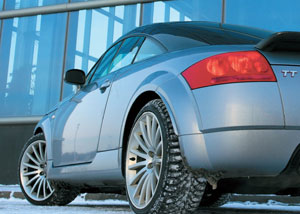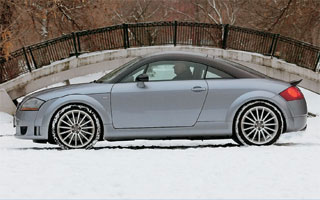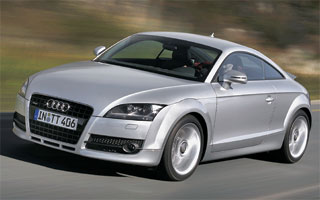Test drive Audi TT compartment 1998 - 2006 compartment
Dimulation will be appreciated!
Audi TT - first -class coupe ... into which many will want to buy a ticket.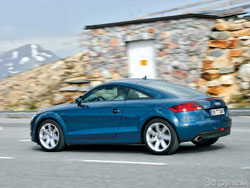 Eight years ago, a new name appeared in the Audi lineup. Behind the abbreviation of TT, a small compartment was hidden with an unusual, undoubtedly attractive technology design, incendiary character and many technical highlights. Some admired the novelty, others rightly criticized the shortcomings, but perhaps there was no person whom this car would leave indifferent. And then the Audi TT of the first generation conveys the baton.
Eight years ago, a new name appeared in the Audi lineup. Behind the abbreviation of TT, a small compartment was hidden with an unusual, undoubtedly attractive technology design, incendiary character and many technical highlights. Some admired the novelty, others rightly criticized the shortcomings, but perhaps there was no person whom this car would leave indifferent. And then the Audi TT of the first generation conveys the baton. Drawing from nature
 It would be madness to abandon bright design decisions of the previous TT. It is possible that the features of the ancestor will meet in the next generations. For example, a characteristic bend of the roof under which small glasses are hidden, or massive contours around the wheeled arches. However, many new strokes made the appearance not as individual as that of the model of the late 90s. Looking in the rear view mirror, I confused test TT with other cars. Take a closer look at the headlights do not resemble cheaper models? Fortunately, the original strokes are also enough for example, rear lights with square reflectors.
It would be madness to abandon bright design decisions of the previous TT. It is possible that the features of the ancestor will meet in the next generations. For example, a characteristic bend of the roof under which small glasses are hidden, or massive contours around the wheeled arches. However, many new strokes made the appearance not as individual as that of the model of the late 90s. Looking in the rear view mirror, I confused test TT with other cars. Take a closer look at the headlights do not resemble cheaper models? Fortunately, the original strokes are also enough for example, rear lights with square reflectors.  In the spirit of modern traditions, the new compartment has become larger, adding only 6 mm in growth, but becoming 78 mm wider and 137 mm longer. The salon stretched out. Now there is more air and above the head, in the shoulders on the front row, 29 mm, a little less from behind. Although this is a weak consolation for someone who turns out to be the third or fourth passenger. A person taller above 170 cm will twist in the back row in the embryo pose. It’s even more funny to watch how he gets out of there. Alas, Formula 2+2 is not written for four adults. By the way, the trunk, as befits a compartment of this class, is modest, but the back of the rear seat folds, and the site about 1.7 m long is enough even for voluminous luggage. The developers assure: the new TT is better dissecting the air. The cross -sectional area increased from 1.99 to 2.08 m2, but the aerodynamic resistance coefficient was seriously reduced from 0.34 to 0.3.
In the spirit of modern traditions, the new compartment has become larger, adding only 6 mm in growth, but becoming 78 mm wider and 137 mm longer. The salon stretched out. Now there is more air and above the head, in the shoulders on the front row, 29 mm, a little less from behind. Although this is a weak consolation for someone who turns out to be the third or fourth passenger. A person taller above 170 cm will twist in the back row in the embryo pose. It’s even more funny to watch how he gets out of there. Alas, Formula 2+2 is not written for four adults. By the way, the trunk, as befits a compartment of this class, is modest, but the back of the rear seat folds, and the site about 1.7 m long is enough even for voluminous luggage. The developers assure: the new TT is better dissecting the air. The cross -sectional area increased from 1.99 to 2.08 m2, but the aerodynamic resistance coefficient was seriously reduced from 0.34 to 0.3. I pass it iner
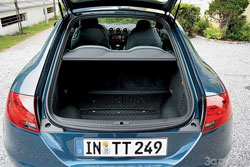 Carefully covering things with a net and slammed the trunk, the smiling manager of the dough gave me the keys to a blue all -wheel drive TT with a 3.2 liter engine and a mechanical six -speed box. While rang out from the parking lot. Behind high window sills, even rather big fences are not visible, not to mention parking columns. You rely on the sixth feeling and the large comfortable mirrors of the parking sensors are recorded in the option.
Carefully covering things with a net and slammed the trunk, the smiling manager of the dough gave me the keys to a blue all -wheel drive TT with a 3.2 liter engine and a mechanical six -speed box. While rang out from the parking lot. Behind high window sills, even rather big fences are not visible, not to mention parking columns. You rely on the sixth feeling and the large comfortable mirrors of the parking sensors are recorded in the option. The character of a 3.2-liter six is \u200b\u200bfar from flexible. In urban traffic jams you have to gently handle the gas pedal. But you can’t occupy the motor for the motor forces: you press the pedal and observe peacefully how those who hung on the tail decrease in the mirrors. True, you have to switch short transfers often, and the lever selectivity is far from the ideal: instead of the sixth, at first you get to the fourth.
 However, you will soon get used to it, to everything else, the mechanics have an excellent alternative to an automatic six-speed box with manual switching S-Tronic.
However, you will soon get used to it, to everything else, the mechanics have an excellent alternative to an automatic six-speed box with manual switching S-Tronic. Behind the beautiful name hides the Volkswagen, known for the models of the concern, with two DSG clutch. The advantages have repeatedly written a car with it not only more obedient, but also faster and more economical. You can only find fault with the manual mode of switching down are unhurried, which does not allow you to effectively slow down the engine.
An ideal couple for the new S-Tronic compartment and a two-liter engine with turbocharged and direct TFSI injection. Against the background of the six, he looks like a kind of cheerful creature. A cheerful and clockwork engine easily spins and the TT is better than the atmospheric motor, the nature of which is heavy for a small compartment.
We storm the mountains
 One of the routes proposed by the organizers led to the Alps. Here, the so -called alpine brake tests are arranged on the Grossglokner pass. We did not comply with the technique, but still mechanisms were pretty warm. They withstood brutal tests, however, at the end of the descent, the pedal force of the car with a two -liter engine (less powerful brakes are installed here than on modifications with a 3.2 l engine) has grown a little, but the effectiveness, as far as I could evaluate, did not fall.
One of the routes proposed by the organizers led to the Alps. Here, the so -called alpine brake tests are arranged on the Grossglokner pass. We did not comply with the technique, but still mechanisms were pretty warm. They withstood brutal tests, however, at the end of the descent, the pedal force of the car with a two -liter engine (less powerful brakes are installed here than on modifications with a 3.2 l engine) has grown a little, but the effectiveness, as far as I could evaluate, did not fall. 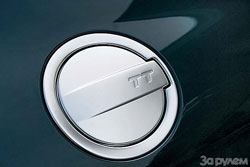 Picturesque mountain serpentine is a suitable place for shooting and checking the running capabilities of TT. Moreover, the chassis was designed almost again. For example, in order to reduce the unsubstantiated masses, the front levers and the subframe were made of aluminum, and a complex multi -leash suspension was installed from behind. For better stability and controllability by more than 40 mm, they expanded the track, and the center of gravity was lowered by 9 mm. Naturally, they conquered over the characteristics of shock absorbers and steering wheel power steering. The results were not forced to wait during the tests that took place on Nürburgring, the new TT brought her predecessor 15 C on the circle, including thanks to the exact chassis settings.
Picturesque mountain serpentine is a suitable place for shooting and checking the running capabilities of TT. Moreover, the chassis was designed almost again. For example, in order to reduce the unsubstantiated masses, the front levers and the subframe were made of aluminum, and a complex multi -leash suspension was installed from behind. For better stability and controllability by more than 40 mm, they expanded the track, and the center of gravity was lowered by 9 mm. Naturally, they conquered over the characteristics of shock absorbers and steering wheel power steering. The results were not forced to wait during the tests that took place on Nürburgring, the new TT brought her predecessor 15 C on the circle, including thanks to the exact chassis settings. 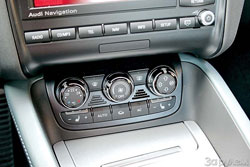 Another technical highlight system Audi Magnetic Ride, automatically adjusting the stiffness of shock absorbers. Instead of ordinary working fluid, they are filled with magnetoreological. It changes viscosity under the influence of the magnetic field, accordingly, the damping characteristics are also adjusted. In addition, the driver can forcibly set the sports mode, the suspension will become tougher.
Another technical highlight system Audi Magnetic Ride, automatically adjusting the stiffness of shock absorbers. Instead of ordinary working fluid, they are filled with magnetoreological. It changes viscosity under the influence of the magnetic field, accordingly, the damping characteristics are also adjusted. In addition, the driver can forcibly set the sports mode, the suspension will become tougher. Having climbed along a winding path to a 2.5-kilometer height, you are convinced that the new compartment in almost all parameters is better than the old model.
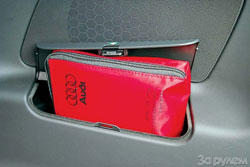 It stands more confidently on the road, turning away diligently, the steep climbs are briskly stormed, but that incendiary sparking has disappeared in it, which forces to return again and again. And not just in order to get from point A to point V.
It stands more confidently on the road, turning away diligently, the steep climbs are briskly stormed, but that incendiary sparking has disappeared in it, which forces to return again and again. And not just in order to get from point A to point V. Today, almost all manufacturers, avoiding risk, do not seek to produce cars with a controversial appearance and complex character to the market. For the most part, cars become similar to diligent graduates dreaming of a gold medal. And so sometimes I want to chat with the mischievous and gilyaka, who has three in a quarter. Although gold is undoubtedly expensive
How the costume is sewn
 The body of the new Audi TT is made according to ASF (Audi Space Frame Audi) technology, which was developed in the early 90s for the flagship of the A8 lineup. The supporting structure is assembled from stamped aluminum profiles, cast parts and leaf panels. The idea was borrowed from the wildlife as well as the bones of the skeleton of any mammal, for each element of the spatial frame they selected its own shape and cross -section, so that with minimal mass it is necessary to obtain the necessary rigidity and strength. Any trifle, up to the rivets connecting the parts of the body, was calculated using computer programs. With aluminum details (69% of the body mass), elements of high -strength steel are adjacent. The latter are mainly in the tail (rear panels of the floor, trunk lid, as well as doors) to improve the weight of the axes.
The body of the new Audi TT is made according to ASF (Audi Space Frame Audi) technology, which was developed in the early 90s for the flagship of the A8 lineup. The supporting structure is assembled from stamped aluminum profiles, cast parts and leaf panels. The idea was borrowed from the wildlife as well as the bones of the skeleton of any mammal, for each element of the spatial frame they selected its own shape and cross -section, so that with minimal mass it is necessary to obtain the necessary rigidity and strength. Any trifle, up to the rivets connecting the parts of the body, was calculated using computer programs. With aluminum details (69% of the body mass), elements of high -strength steel are adjacent. The latter are mainly in the tail (rear panels of the floor, trunk lid, as well as doors) to improve the weight of the axes.  Aluminum and steel details are connected by rivets, squeezing and welding. To prevent corrosion, protecting coatings and sealants are used. In addition, the screws that screw the robots, due to friction, heat and melt the surface layer of the part such a compound do not need additional protection at all. Another curious know-how seamless laser welding of the aluminum roof and sidewalls.
Aluminum and steel details are connected by rivets, squeezing and welding. To prevent corrosion, protecting coatings and sealants are used. In addition, the screws that screw the robots, due to friction, heat and melt the surface layer of the part such a compound do not need additional protection at all. Another curious know-how seamless laser welding of the aluminum roof and sidewalls. The result is rightfully proud of the mass of a durable body of only 206 kg, the entire steel structure would be almost half harder.

Maxim Sachkov
Source: The magazine "Driving"
Video Crash tests Audi TT compartment 1998 - 2006
Audi TT TT POM TT CUP 1998 - 2006
Crash test Audi TT compartment 1998 - 2006
Krassh Test: Detailed Information28%
Driver and passengers







